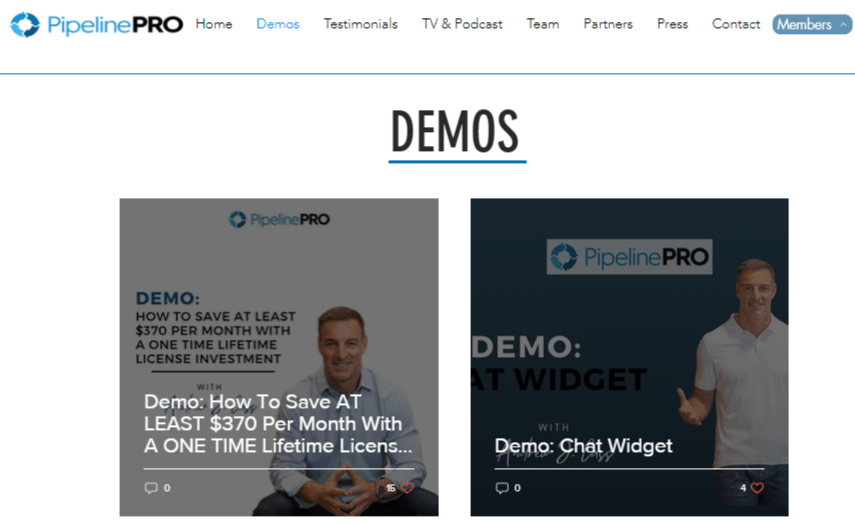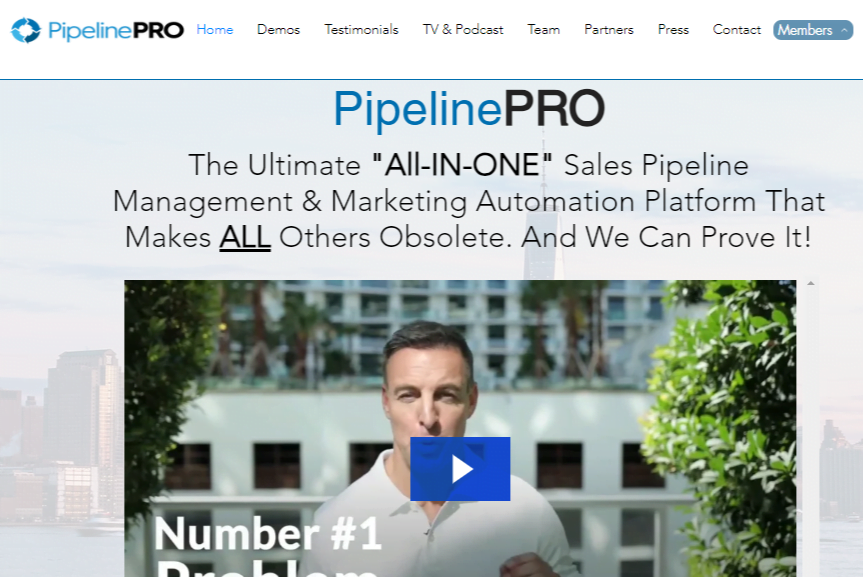Want to streamline your workflow and boost productivity? Look no further than pipeline CRM integrations.

By seamlessly connecting your customer relationship management system with other essential tools, you can supercharge your business operations. From automating tedious tasks to gaining valuable insights, these integrations offer a game-changing solution for businesses of all sizes. Stay ahead of the curve by harnessing the power of integrated systems to drive efficiency and maximize results.
Quick Summary
To successfully integrate Pipeline CRM with other tools, begin by mapping out your current systems and identifying which areas require integration to enhance workflow and customer interactions. Prioritize these integrations based on their potential impact. Develop a detailed plan that outlines specific integration points, data flow, and expected outcomes, including a timeline for tracking progress. Involve relevant stakeholders from different departments to ensure the integration aligns with everyone’s needs and goals. Regularly communicate and update all parties involved to promptly address any issues that arise during the process.
Next, use automation tools or third-party services specializing in connecting various platforms to streamline the integration process and reduce manual errors. Leverage APIs (Application Programming Interfaces) to facilitate real-time data exchange between Pipeline CRM and other tools, ensuring information is always up-to-date across all systems. Thoroughly test each integration before full implementation to prevent disruptions. This structured approach will help you achieve a seamless integration, enhancing productivity, optimizing workflows, and improving customer relationships.
Exploring Pipeline CRM Integrations
Seamless Connectivity
Pipeline CRM offers a diverse selection of integrations, enhancing its functionality by connecting with numerous apps and software. This seamless connectivity allows users to streamline their workflow and access all necessary tools within the Pipeline CRM platform.
Integrating with popular tools like Zapier, Mailchimp, and Slack enables users to automate tasks, send targeted email campaigns, and communicate effectively with team members without switching between multiple applications. The ability to connect with these external tools directly from Pipeline CRM simplifies processes and boosts productivity.
Versatility in Integration
The versatility of integrating various tools with Pipeline CRM provides users with the flexibility to customize their workflows according to specific needs. By seamlessly connecting Pipeline CRM with project management tools like Trello or Asana, users can centralize project information, track progress, and collaborate efficiently within a single platform.
Moreover, integrating accounting software such as QuickBooks or Xero with Pipeline CRM allows for seamless financial management, enabling businesses to track invoices, payments, and financial data alongside their customer relationship management activities. This integration streamlines operations and ensures accurate financial reporting.
Try Pipeline CRM for Free Today!
Don’t miss out on this opportunity to enhance your efficiency and maximize results. Sign up now and see how Pipeline CRM can transform your business.
Enhanced Project Management
By integrating project management tools like Monday.com or Basecamp with Pipeline CRM, businesses can achieve enhanced project oversight, task delegation, and deadline management. This integration facilitates the synchronization of project-related data between platforms, providing a comprehensive view of ongoing projects within the CRM system.
Furthermore, integrating communication tools such as Zoom or Microsoft Teams with Pipeline CRM fosters real-time collaboration, video conferencing capabilities, and efficient communication channels directly within the CRM interface. This integration enhances team coordination and ensures seamless information sharing across departments.
Benefits of CRM System Integrations
Time-Saving Efficiency
Integrating CRM systems such as Pipeline CRM with other software offers significant advantages. By streamlining processes and centralizing data, businesses can save time and increase operational efficiency. This integration eliminates the need for manual data entry across multiple platforms, reducing errors and enhancing productivity.
Efficiency gains result from seamless data flow between different systems. For instance, when Pipeline CRM is integrated with email marketing software, customer interactions are automatically logged in the CRM system. This automation saves employees valuable time that would otherwise be spent on manual data input.
Enhanced Customer Relationships
CRM system integrations play a crucial role in enhancing customer relationships. By consolidating customer information from various touchpoints into a single platform, businesses gain a comprehensive view of each customer’s interactions and preferences. This consolidated data allows sales and support teams to provide personalized services tailored to individual needs.
The ability to access a 360-degree view of customer interactions enables businesses to deliver timely responses and anticipate customer needs accurately. Integrating Pipeline CRM with help desk software, for example, ensures that support agents have access to a customer’s purchase history and previous inquiries. This seamless flow of information empowers agents to provide proactive assistance, leading to improved customer satisfaction.
Sales Boosting Capabilities
Integrating CRM systems like Pipeline CRM with other tools can significantly impact sales performance. By connecting CRM with marketing automation platforms, businesses can create targeted campaigns based on customer behavior data stored in the CRM system. These targeted campaigns enhance lead generation efforts and improve conversion rates.
Furthermore, integrating Pipeline CRM with e-commerce platforms enables sales teams to track customer interactions throughout the purchasing journey. This visibility into customer behavior allows sales representatives to identify upsell or cross-sell opportunities effectively. By leveraging this integrated approach, businesses can drive revenue growth by capitalizing on personalized sales strategies tailored to individual customers.
Popular Forms and Their Impact
Elementor Form
Elementor Form integration with Pipeline CRM streamlines the process of capturing people and contacts. By seamlessly connecting user-submitted data to Pipeline CRM, it automates lead capturing efficiently. This integration significantly reduces the time spent on manual data entry.
The impact of integrating Elementor Form with Pipeline CRM is profound. It enhances the accuracy of data input, ensuring that all requests are promptly recorded in the system. This automation not only saves time but also minimizes errors in lead management processes.

Gravity Forms
When integrated with Pipeline CRM, Gravity Forms revolutionizes how businesses manage their leads. The seamless connection between Gravity Forms and Pipeline CRM enables swift data import processes. As a result, businesses can swiftly convert form submissions into actionable leads.
The integration of Gravity Forms with Pipeline CRM ensures that all incoming leads from forms are promptly recorded and categorized within the system. This automated process eliminates the need for manual data entry, allowing businesses to focus on nurturing leads effectively.
Incorporating popular forms like Elementor Form and Gravity Forms into Pipeline CRM brings significant benefits to businesses. The automation of lead capturing and data import processes enhances operational efficiency by reducing manual workloads. Businesses can now focus on engaging with leads rather than spending time on administrative tasks.
Enhancing CRM with Email and Scheduling
Syncing Contacts
Integrating Pipeline CRM with email marketing platforms like Outlook enables seamless syncing of contacts. This ensures that all client information is up-to-date across systems.
Efficiently manage prospecting lists by automatically updating contact details in Pipeline CRM when changes are made in Outlook. This eliminates manual data entry errors and saves time.
Calendar Integration
Syncing the CRM calendar with tools like Google Apps allows for a centralized view of all scheduled events. By linking the calendar, you can easily track appointments, follow-ups, and meetings within Pipeline CRM.
Improve time management by accessing your schedule directly from the CRM platform. With synchronized calendars, you can avoid double bookings and stay organized with timely reminders.
Email Communication
Integrating email services with Pipeline CRM enhances communication efficiency. By connecting your email accounts, all correspondence related to clients is stored within the CRM system for easy reference.
Track email interactions with prospects directly within the CRM interface. This integration ensures that important conversations are documented and accessible, leading to better customer relationship management.
Workflow Streamlining
By integrating Pipeline CRM with email and scheduling tools, businesses can streamline their workflows effectively. The seamless flow of information between systems reduces manual tasks and improves overall productivity.
Automate repetitive processes such as sending follow-up emails or scheduling appointments through integrated workflows. This not only saves time but also ensures consistency in communication with clients.

Productivity Enhancement
The integration of contact synchronization, calendar management, and email communication leads to a significant enhancement in productivity. Users can access all relevant information in one place, eliminating the need to switch between multiple applications.
Increase team collaboration by sharing updated contact details and schedules across departments through integrated systems. This fosters a cohesive work environment focused on delivering exceptional customer service.
Streamlining Operations with Automation Tools
Formstack Integration
Formstack is a powerful automation tool that streamlines data collection and management processes. By integrating Formstack with Pipeline CRM, businesses can automate lead generation and customer information gathering efficiently.
Automating manual processes through Formstack eliminates the need for repetitive data entry tasks, saving time and reducing errors. This integration allows seamless synchronization of leads and customer records between platforms, ensuring data accuracy across channels.
Import2 Integration
With Import2, businesses can automate the import of data from various sources into Pipeline CRM. This automation tool simplifies the process of transferring information from different software applications, such as Google Sheets or other communication platforms, to streamline workflow processes.
By integrating Import2 with Pipeline CRM, companies can enhance operational efficiency by syncing billions of online identifiers seamlessly. This integration ensures that customer information is up-to-date and accurate, enabling businesses to make informed decisions based on real-time data.
Optimization Benefits
Integrating automation tools like Formstack and Import2 with Pipeline CRM offers numerous benefits for companies looking to optimize their operations. These tools enable businesses to share estimates and sync information effortlessly, improving communication and collaboration within the organization.
By automating data import processes, companies can save time on manual data entry tasks and focus on more strategic activities. The integration of automation tools with Pipeline CRM empowers businesses to manage leads effectively, track sales pipelines accurately, and enhance overall productivity.
- Pros:
- Streamline data collection processes
- Reduce manual errors in lead generation
- Enhance communication and collaboration among teams
- Cons:
- Initial setup may require technical expertise
- Continuous monitoring needed to ensure data accuracy
Optimizing Workflow through Task Management
Enhancing Task Tracking
Integrating Pipeline CRM with task management tools like Asana allows for efficient task tracking. By syncing these platforms, users can seamlessly monitor and update tasks across different projects. This integration provides a centralized hub for managing all work activities.
By automating the task creation process based on deal stages in Pipeline CRM, users can ensure that each project’s progress aligns with the sales pipeline. This automation eliminates manual data entry and reduces the chances of human error, leading to more accurate project timelines.
Improving Team Collaboration
Task management integrations play a crucial role in streamlining workflow processes and enhancing team collaboration. With real-time updates and notifications, team members can stay informed about project developments, deadlines, and priorities. This fosters better communication and coordination among team members.
Integrating Pipeline CRM with task management apps also provides valuable time insights by tracking the time spent on each task or project. This data helps teams optimize their workflows, allocate resources efficiently, and identify areas for improvement.
Boosting Productivity
Automating task and project creation based on deal stages not only saves time but also boosts overall productivity. By linking deals in Pipeline CRM to specific tasks or projects in task management tools, users can ensure that no critical steps are missed during the project lifecycle.
Moreover, these integrations offer advanced capabilities such as generating invoices directly from completed tasks or projects. This seamless process eliminates manual invoicing tasks and enhances overall efficiency within the organization.
Leveraging Data for CRM Enhancement
Excel Integration
Excel integration with Pipeline CRM allows businesses to analyze data effectively for identifying qualified leads and enhancing the customer experience. By connecting these tools, companies can streamline data management processes.
Integrating Pipeline CRM with Excel enables businesses to enrich their customer profiles by consolidating information from various sources. This integration provides a comprehensive view of customers, helping teams tailor their interactions based on specific needs.
ActiveDemand Integration
By integrating Pipeline CRM with ActiveDemand, companies can gain valuable insights into their customer base, allowing them to target their ideal customers more effectively. This integration helps in automating marketing campaigns and personalizing interactions.
The integration of Pipeline CRM with ActiveDemand enhances the overall customer experience by delivering targeted content and personalized communications. This approach increases customer engagement and boosts conversion rates significantly.
Decision-Making and Strategy Optimization
Data integration plays a crucial role in enhancing decision-making processes within organizations. By combining data from different sources through Pipeline CRM integrations, businesses can make informed decisions based on real-time insights.
The utilization of integrated data from various tools like Excel and ActiveDemand empowers businesses to develop targeted sales and marketing strategies. This approach ensures that teams have access to accurate information for implementing effective campaigns.
- Pros:
- Improved data accuracy
- Enhanced customer segmentation
- Streamlined marketing efforts
- Cons:
- Initial setup may require technical expertise
- Potential data security concerns
Strategies for Effective Integration Implementation
Key Steps
To ensure successful integrations with Pipeline CRM, start by mapping out your current systems and identifying the areas that require integration. Next, prioritize these integrations based on their impact on your workflow and customer interactions.
Consider creating a detailed plan that outlines the specific integration points, data flow, and expected outcomes. This plan should also include a timeline for each integration to track progress effectively.
Best Practices
One of the best practices for integrating tools and software with Pipeline CRM is to involve all relevant stakeholders from the beginning. By including team members from different departments, you can ensure that the integration aligns with everyone’s needs and goals.
Regular communication and updates are crucial during the integration process to address any issues promptly. Testing each integration thoroughly before full implementation is also essential to prevent any disruptions in your CRM system.
Seamless Integration
For a seamless integration experience, consider using automation tools or third-party services that specialize in connecting different platforms. These tools can streamline the integration process and reduce manual errors significantly.
Leverage the power of APIs (Application Programming Interfaces) to facilitate data exchange between Pipeline CRM and other tools. APIs allow for real-time data syncing, ensuring that information is always up-to-date across all integrated systems.
Final Remarks
You’ve discovered the power of integrating your CRM system, unlocking a realm of benefits and efficiencies. By incorporating various tools and strategies, you can streamline operations, enhance customer relationships, and optimize workflows seamlessly. Leveraging data and automation tools allows for a more personalized approach to managing your business processes effectively.
Take action now to implement these integration techniques into your CRM system. Start by assessing your current needs and selecting the most suitable tools for your business. Remember, a well-integrated CRM system is not just a convenience but a strategic advantage that can propel your business forward with enhanced productivity and customer satisfaction.
We Recommend 🏆
Pipeline Pro’s CRM is designed specifically to manage and track customer interactions efficiently. The platform’s intuitive interface allows users to visualize their sales pipeline, ensuring that leads and deals are easily manageable and prioritized effectively.

